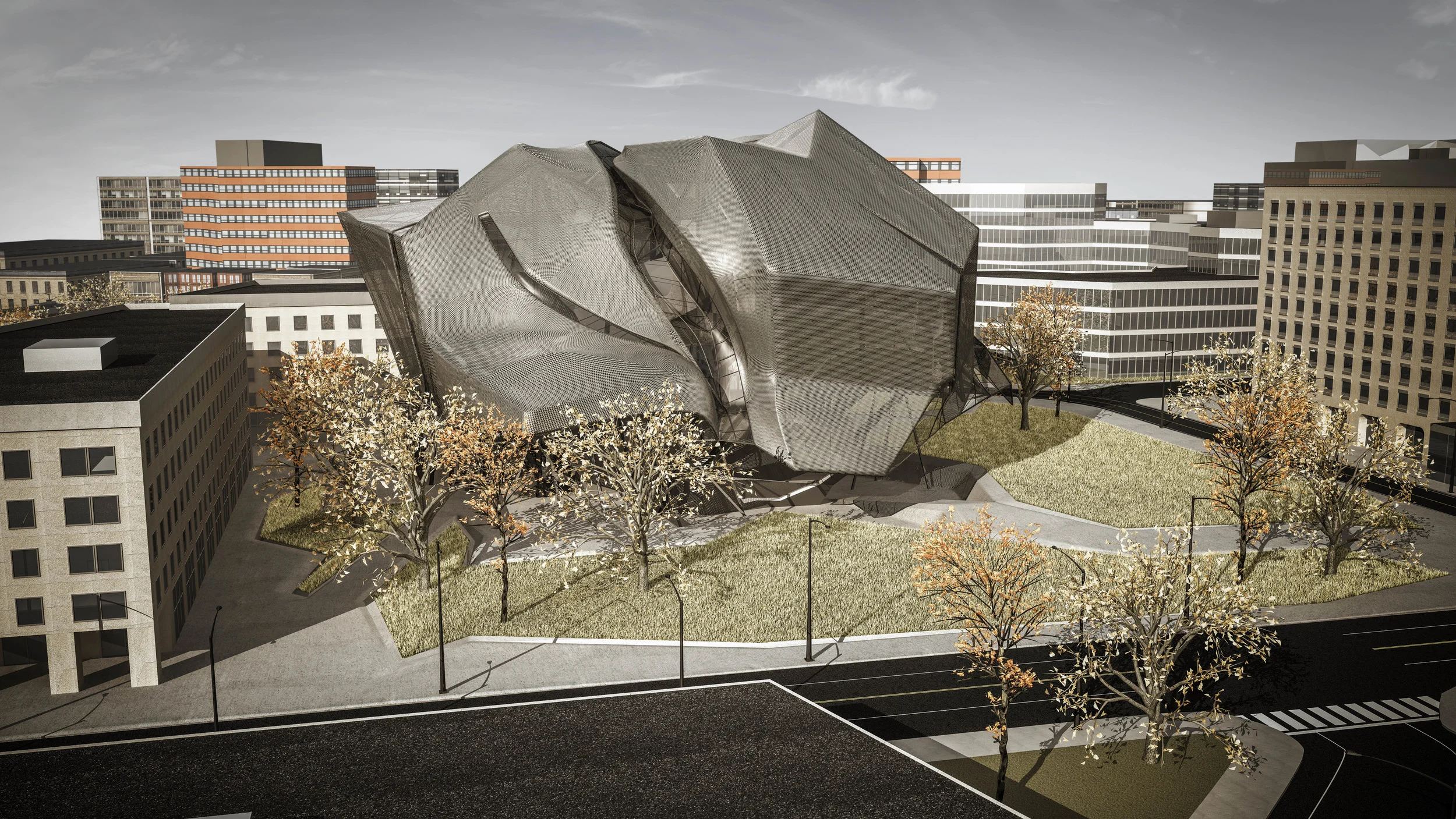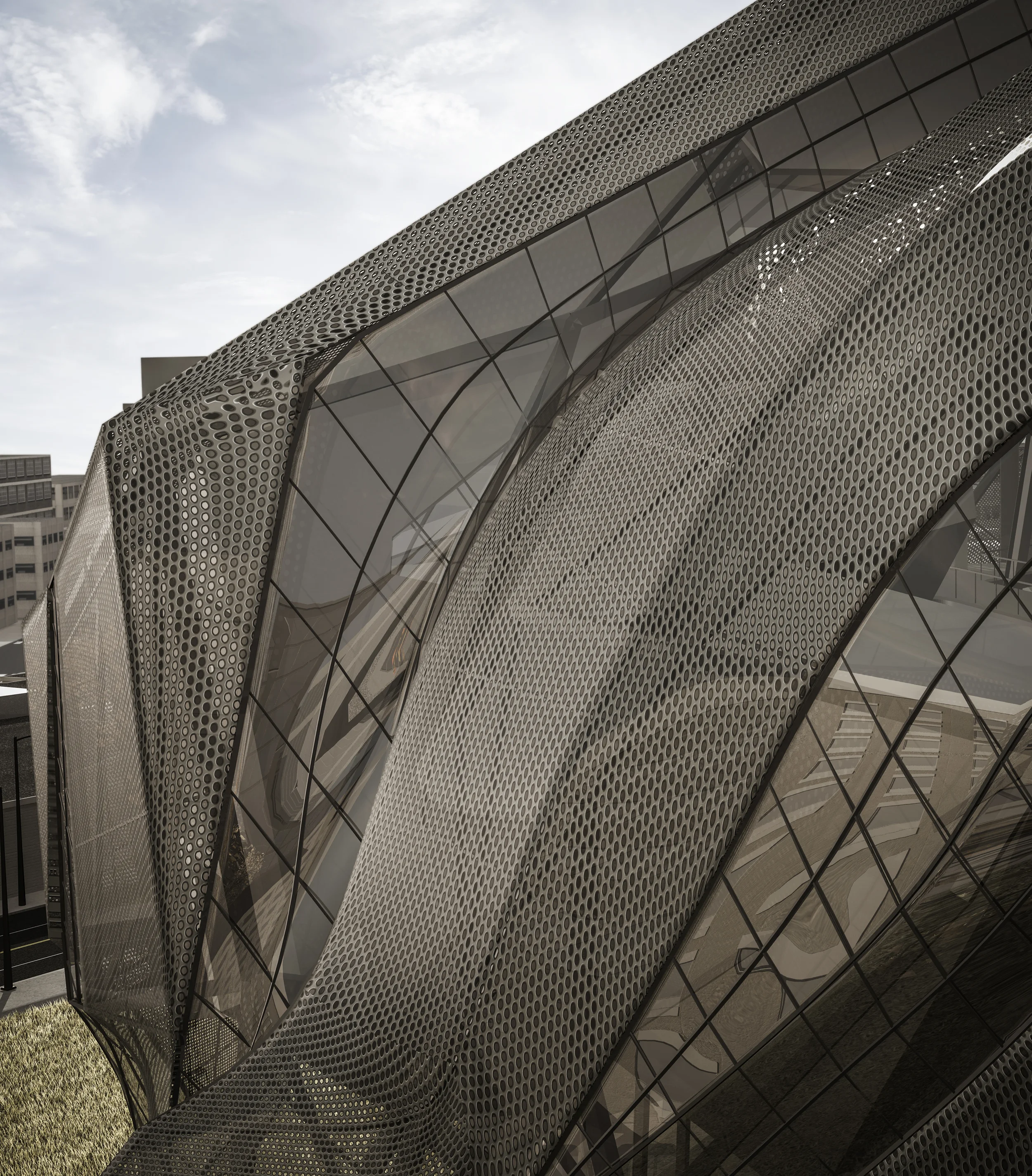










A Thesis project for 2015 Undergrad for Sci-Arc (Southern California Institute of Architecture)
Advisor: Dwayne Oyler
Special Advisor: Thom Mayne and Dora Epstein-Jones
Artistically, a body in motion is registered through the traces of the line of the figure left behind as the figure has moved across the field. This can be read as a “palimpsest” of the figure, and therefore a visual residue of the movement. In the act of drawing architecture, it is presumed that the building is ultimately static, however, digital processes and especially modeling are created in a dynamic interface environment. So, those objects that we derive from the digital interface should similarly have palimpsestic qualities. Throughout architectural history, most drawings were done and when corrected, the erasing left a mark of what was once on the page. The delete function has now taken over in its place. Surfaces get trimmed, geometries get booleaned, and primitive shapes are manipulated far past their original shape. The geometries then get cut, a drawing is made of them, the drawing is its own interpretation and edit of what could be a composition of numerous elements. These drawings then get handed down and building is made of them and through every step in its process a sense of resolution gets lost. What gets built is made up of parts of what was only ever a trace in the digital to begin with.
This thesis tries to exploit the forms of trace that the digital can produce. The approach to the problem relies on an operational strategy that I am calling “trace of a trace” to re-approach the design of MIT’s Technology Square in Cambridge, Massachusetts. The strategic operations that I have focused on include animating a directional impact on mass that is time specific; and selecting different reproducible instances to open up a normally very private campus to the public. Working in this way, this thesis synthesizes the reading of a movement in architecture not only as visceral, but as experience, as the site and program locate coherencies among each other through the dynamics of the process. By animating the building to the site, and by literalizing this in the space of the line and the cut of the form a deeper and broader understanding of what this building signifies is provoked as an influence of its impact locally and globally. The dynamic approach – from marks to animate forms- can call for a way to break the mass more into pieces, and to fill the gaps with transformative traces.
